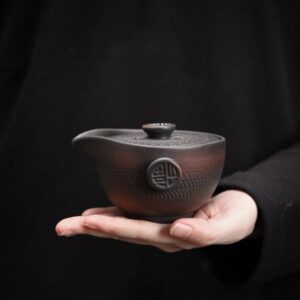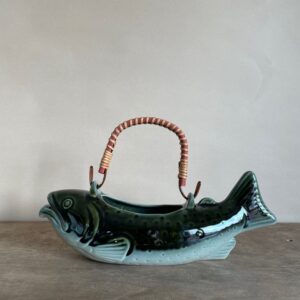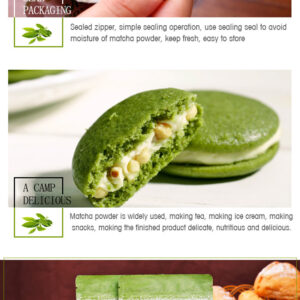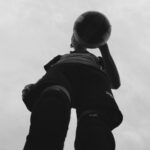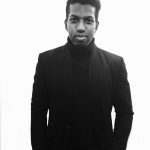Green tea is deeply entrenched in Japanese culture, history, and tradition. Tea ceremonies were a universal aspect of everyday life in Japan; from feudal lords settling political disputes or forging alliances to its ever-presence in boardrooms and business meetings. The prevailing importance of this caffeinated drink cannot be questioned.
Tea is not just a drink in Japan, tea is life. Green tea is offered free of charge as soon as customers are seated, and refills are normally par for the course. It’s not out of the ordinary, in Japan, to consume tea when you are under the weather (then again this seems like a given!)
Let’s get the facts straight, Japanese green tea only accounts for 7% of global green tea production. In fact, 95% of all Japanese green tea is consumed domestically. ONLY 5% of Japanese green tea is exported! Talk about keeping it local.
For anyone looking to become a hotshot in Japanese green tea and adeptly navigate through the myriad that is the main proponent of Wabi-Sabi. Delve into this crash course in the main green tea varieties out there.
How Japanese green tea is grown?
The Camelia Sinensis is the tea plant that we owe all our delicious sips to. The Japanese have been experimenting and harvesting green tea for its curative properties for centuries. It’s actually pretty marvellous how many types of green tea exist purely from variations in harvesting and preparation techniques.

-
Terroir & Weather:
The local ecosystem of where tea plants are grown and harvested should always be taken into consideration when looking for the perfect tea. Think wine, there’s a reason people pay top pound (or dollar) for wine grown in specific regions of France compared to say…China.
Soil composition, chemistry, mineral content are directly absorbed by the plant, not to mention the water it drinks! Regional weather patterns, rain, proximity to the ocean, elevation all play a role in shaping the nutritional content, flavour, and appearance of Japanese green tea.
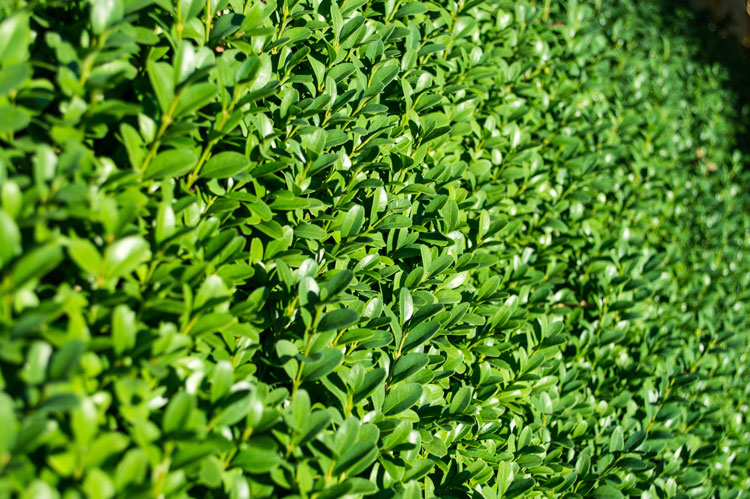
-
Time of Harvest:
How does harvesting in Spring, Summer, or Autumn affect the tea? Tea leaves are picked early in spring since tea buds straight after their winter hibernation offer the sweetest flavours, due to the slowing of growth in the colder months.
During Summertime, tea plants rapidly grow new leaves as sunlight converts into natural sugars with any excess stored in the roots for the coming winter. Maturing leaves during summer are larger but possess little to no sweetness, displaying bitter and astringent flavours due to the large concentration of tannins.
Autumn tea leaves slow down their growth, enabling tea plants to develop additional complexities in their taste before entering a dormant state during winter.
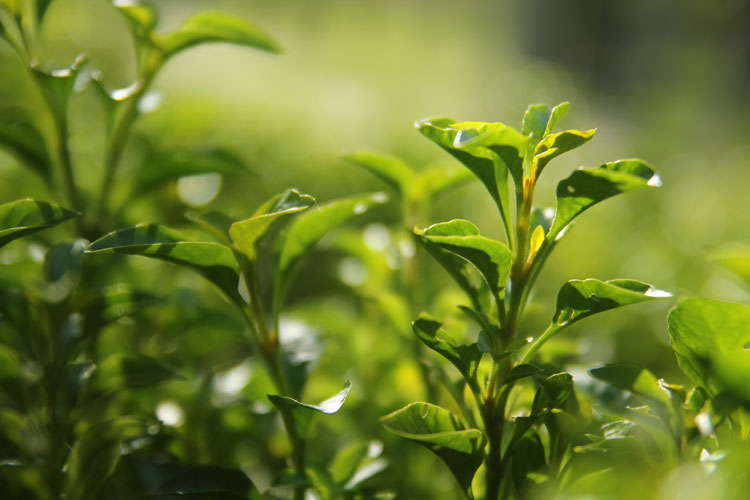
-
Sunlight & Shade:
Sunlight plays a huge part in how a tea plant ends up tasting. Tea plants exposed to sunlight tend to have higher levels of vitamin C and tannins (which gives the tea its sharp taste but also fights cancer!)
The longer a tea plant is grown in shade, the higher the concentration of chlorophyll and amino acids such as L-Theanine. Teas with a higher content of L-Theanine have a sweeter flavour. Shaded tea plants are brighter green in colour due to the chlorophyll. Increasing the length of shading is directly linked to the increasing levels of caffeine in the tea plant.
Let’s get to know all types of Japanese green tea…
Sencha
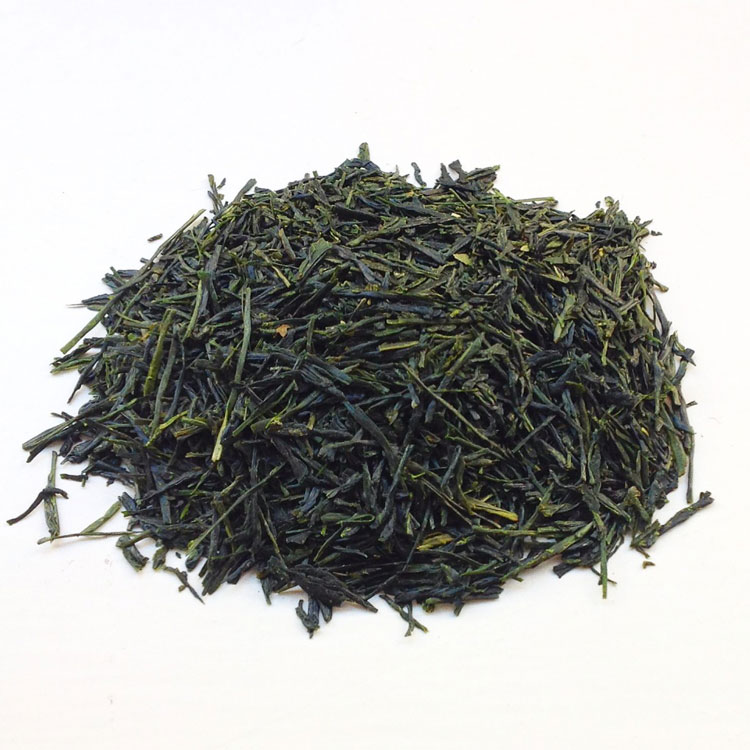
The most popular Japanese green tea. A whole leaf tea that makes up 80% of Japan’s yearly tea harvest. Sencha is steamed to prevent oxidation of the leaves from the Camellia Sinensis plant.
The highest quality Sencha tea is made with leaves from the first flushes of plants which are considered the most delicious.
Flavour: Bittersweet and grassy with a nutty, fruity aftertaste.
Appearance: Sencha leaves are vivid green in colour, and when infused produce a greenish golden colour.
Health Benefits: Contains antioxidants that fight free radicals that decrease oxidative stress and are reported to inhibit carcinogenesis.
Trivia: Sencha’s flavour and aftertaste make it perfect for Ice Tea.
Where to buy? Postcard Teas.
Gyokuro

One of the most well-known Japanese green tea is famously grown in the shade. Gyokuro goes through a special process of preparation where the tea leaves are covered from sunlight for at least 20 days. Gyokuro is grown only once a year in specific tea plantations – which makes it one of the most expensive teas on the market.
Flavour: Slightly sweet and mellow with a distinct umami taste (similar to nori seaweed). The high concentration of amino acid L-theanine contributes to the distinct taste.
Appearance: Dark green in colour. After infusion, the tea takes on a cloudy, pale, yellow-green colour, which is where Gyokuro gets its name ‘jade dew’ from.
Health Benefits: Contains catechins that boost metabolism and lower blood pressure, to maintain a healthy heart.
Trivia: The finest Gyokuro is produced in the Kyoto region. Gyokuro was first discovered and brewed by a member of the same Yamamotoyama Tea Company that made its fortune selling Sencha, in 1835
Where to buy? Rare Tea Company.

Matcha during their tea ceremonies during the Kamakura period of Japan’s history
matcha only uses leaves picked at the first harvest, usually at the beginning of May. Farmers harvest the first flush leaves for their colour, taste, fragrance, and nutritional elements.
Matcha.
Flavour: The grade and location of Matcha heavily affect its taste. Low-grade matcha tastes quite bitter and vegetal, high-quality ceremonial grades of matcha is very smooth and even buttery. All Japanese matcha has a strong umami flavour.
Appearance:
Matcha has a dull hue of green that borders on yellow-green.
Health Benefits:
One of the many unique features of Matcha is that it’s the only tea where you can consume the whole tea leaf rather than just steep it. It is extremely high in antioxidants, loaded with catechins; which boosts memory, immune system, and concentration. Matcha can also help with weight loss and the burning of calories.
Trivia: Matcha is not to be confused with standard green tea powder – this is usually much lower quality tea that has not undergone the extensive process.
Where to buy? Good Mood Matcha.
Genmaicha
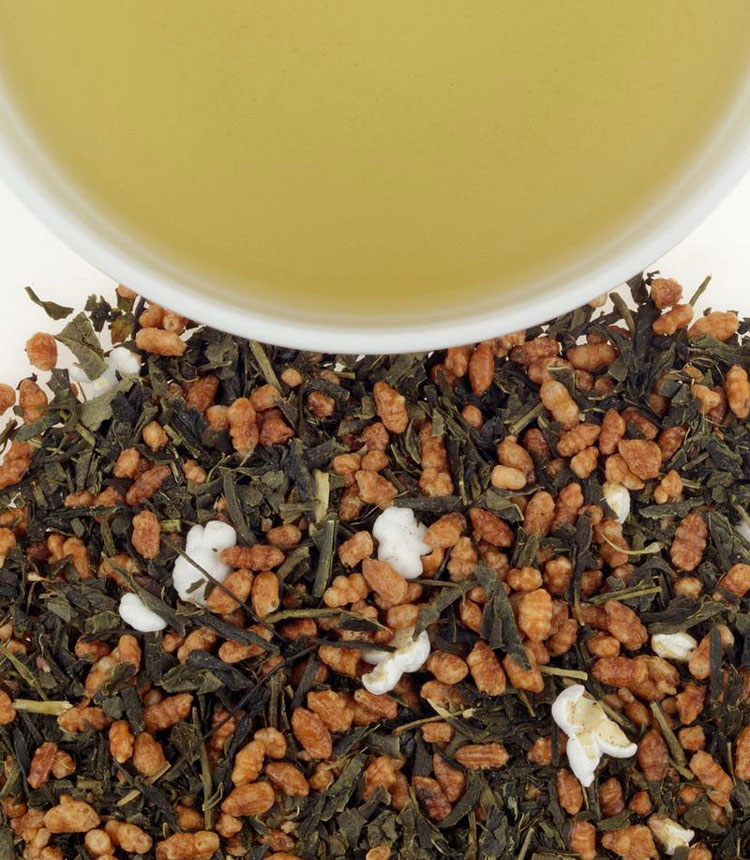
A combination of Bancha tea leaves mixed with roasted brown rice, also known as “pop-corn” tea. Originally a drink for poor farmers who couldn’t afford the more extravagant teas, the rice served as a filler to reduce the price paid for tea. Monks and soldiers who went through long periods without a proper meal sought out Genmaicha as an inexpensive nutritional drink.
Flavour: The nutty flavour of the brown rice balances out the bitterness of the tea leaves, giving the drinker a lovely popcorn-like taste.
Appearance: Light Yellow hue.
Health Benefits: Genmaicha reduces the bad cholesterol in your blood and increases the good cholesterol. The selenium in Genmaicha improves blood flow and lowers the chance of heart disease.
Trivia: Some of the rice kernels actually do pop during the roasting process.
Where to buy? Harney & Sons.
Hojicha

While most Japanese teas are just steamed, Hojicha, also, undergoes a roasting process in a porcelain pot over charcoal. Hojicha tea leaves are typically low-grade leaves since higher grade leaves are too delicate for the high-temperature roasting process.
Flavour: A signature earthy aroma and deep umami smokey taste.
Appearance: light to reddish-brown in colour.
Health Benefits: A great stress reliever. Its low levels of caffeine but high levels of amino acid L-Theanine means that Hojicha is great for those late afternoon tea sessions that help reduce mental and physical stress and lower cortisol levels.
Trivia: Often made from Bancha tea leaves but can also use Sencha (unshaded green tea), or Kukicha (twig tea). Not only is Hojicha a great decaf alternative due to its low levels of caffeine but it can also come in tea powder form for drinking, cooking and confectionery. Try a Hojicha latte!
Where to buy? Tea Lyra.
Konacha
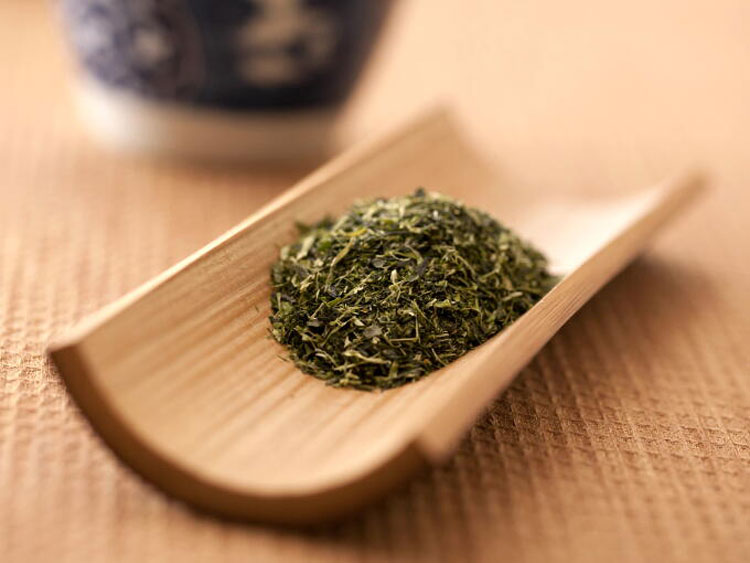
Made from the milled tea buds and small leaves left behind the Gyokuro and Sencha harvest. Konacha tea is drunk with a tea strainer or tea bag in a Japanese teapot and is often served at Sushi restaurants.
Flavour: Strong and relatively bitter
Appearance: When infused Konacha possesses an intense green colour.
Health Benefits: As it’s a natural byproduct of Gyokuro and Sencha, it contains catechin which boosts the metabolism and lowers blood pressure, to maintain a healthy heart.
Trivia: Ideal for cooking
Where to buy? Hibiki an.
Shincha

Shincha translates to “new tea” and refers to the first (harvest) flush of the Sencha Green Tea plant. Depending on the region of harvest in Japan, Shincha season lasts between April and late May.
Being the first picked, Shincha tea leaves are considered the best from the harvest batch. A variation of Shincha is Hachijuhachiya Sencha or the 88th night team.
Flavour: Fresh and sweet with a lower level of astringency. The taste is considered stronger than Sencha.
Appearance: Identical to Sencha.
Health Benefits: Identical to Sencha. Legend has it that if you pick some of the buds and drink you will be protected from Paralysis.
Trivia: It is said that drinking Shincha 88 days after Risshun (the beginning of Spring) is really good for your health. Nowadays, Hachijuhachiya, due to weather instability, is not always picked up on the exact 88th day but harvesters still try their best so that people can enjoy all of its unique traits.
Where to buy? Bohea Teas.
Bancha
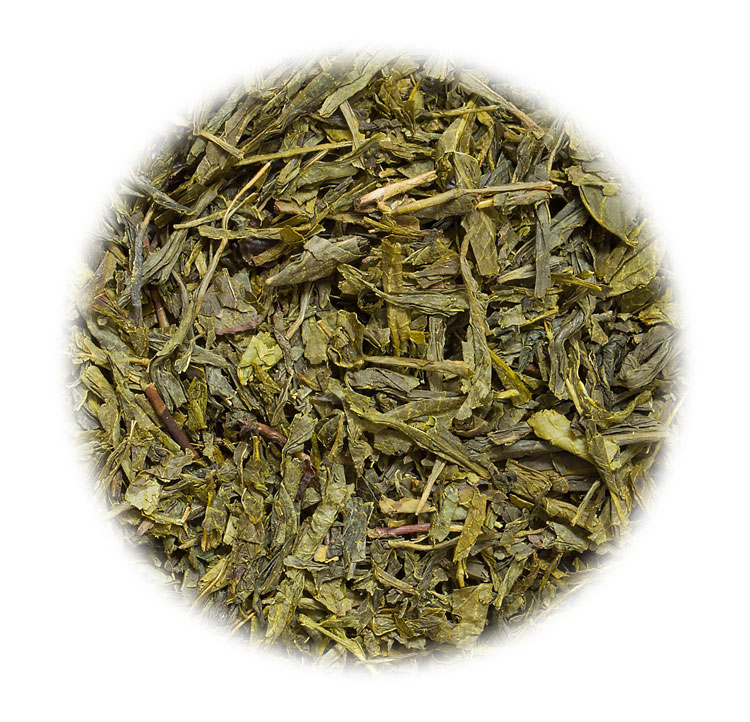
The second flush of the Sencha tea plant is harvested between Summer and Autumn. Bancha is hugely popular in Japan as an everyday common tea and is the second most popular tea in Japan, behind Sencha.
A variation of Bancha green tea is Aki Bancha which is Fall harvested Bancha. Aki translates to Autumn.
Flavour: Offers a light and refreshing flavour with a mild sweetness. The aroma is fresh.
Appearance: Bancha leaves are vivid green in colour and when infused produce a greenish golden colour.
Health Benefits: Drinking Bancha aids digestion (rich in tannins) and contains less caffeine than Sencha and Gyokuro. Suitable for people with stomach and intestinal problems.
Trivia: The majority of Bancha teas became popular in the middle of the Edo period
Where to buy? Green Heart Store.
Fukamushicha
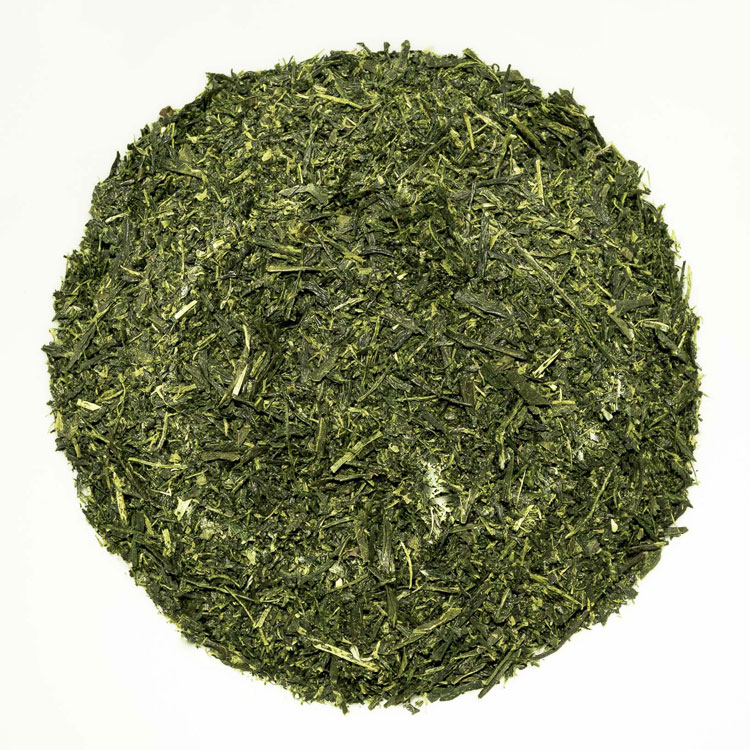
A common tea found in the Shizuoka prefecture, Fukamushicha is Japanese green tea that has undergone a longer steam process; 1 – 2 minutes longer. As a result, the tea leaves are very soft, and break apart during the rolling process, becoming powder-like when dry.
Flavour: Sweet flavour due to the deep steaming.
Appearance: Rich, green colour.
Health Benefits: Rich in catechins, vitamins and chlorophyll.
Trivia: Prolonged exposure to sunshine results in the tea leaves becoming harder, to offset this issue a longer steaming process was established
Where to buy? Curious Tea.
Funmatsucha
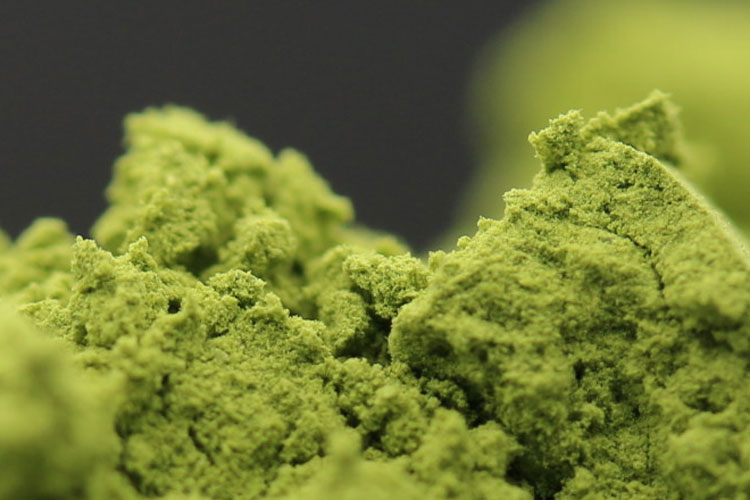
Consists of tea leaves of Sencha, Houjicha, Gyokuro grounded into a powder. Funmatsucha can also be used in cooking and confectionery and is given the nickname tokeru ocha: “tea that melts.”
Flavour: Tastes like concentrated Sencha, quite sharp and bitter.
Appearance: Green Tea powder texture, identical to Matcha in colour.
Health Benefits: As a powdered tea; Funmatsucha contains higher levels of antioxidants compared to other teas and is perfect for boosting the immune system in fighting the common cold, headaches, and illnesses.
Trivia: A popular drink in Japanese Sushi bars and restaurants.
Where to buy? Japantorg.
Yamecha

A type of Gyokuro tea that originates from the Yame region of the Fukuoka Prefecture, with a history spanning 600 years, after being brought over by a Zen priest Eirin Suzui. Yamecha is high in flavour-producing compounds such as theanine, glutamic acid, and arginine.
Yamecha fields are situated on gently-sloping mountain faces, which are often shielded by fog. This environment helps protect the tea leaves from direct sunlight and produces a richer flavour.
Flavour: A strong sweet smell and deep taste, packed with flavour-producing compounds.
Appearance: Dark green
Health Benefits: Like any Gyokuro type teas, Yamecha is high in catechins, which boosts the metabolism and lowers blood pressure, to maintain a healthy heart.
Trivia: Yamecha grown tea has won the award for the best Gyokuro at the National Tea Competition in Japan (Japan’s most prestigious tea competition) 12 years in a row.
Where to buy? Theodor.
Aracha
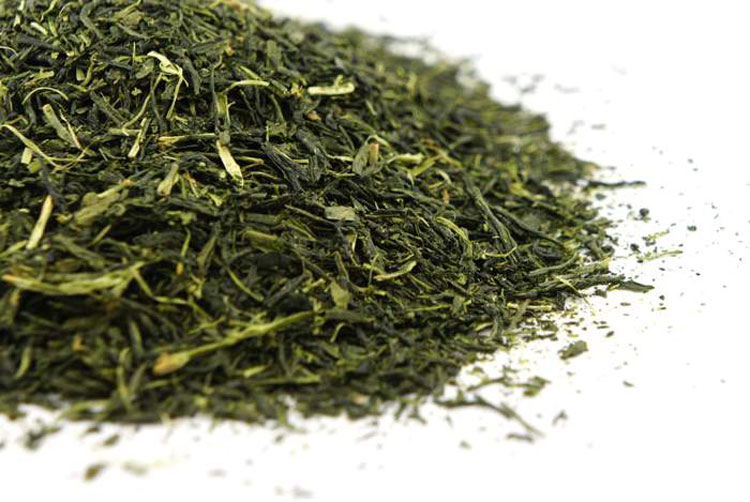
Made from using the entire leaf of the tea plant, also known as unrefined or crude tea. Aracha tea retains its original shape only undergoing cropping and no refining or processing. Brewing Aracha tea involves all parts of the tea leaf, including the stems, veins, leaf hairs and bits of broken-down leaf.
Flavour: Bold taste due to the “natural” state of the tea. Stems of the leaves of Aracha are sweeter and store less bitter components
Appearance: Deep green.
Health Benefits: Rich in catechins (tannins).
Trivia: Aracha tea is not normally distributed to consumers but has been drunk by tea farmers for generations.
Where to buy? Yunomi.
Kabusecha
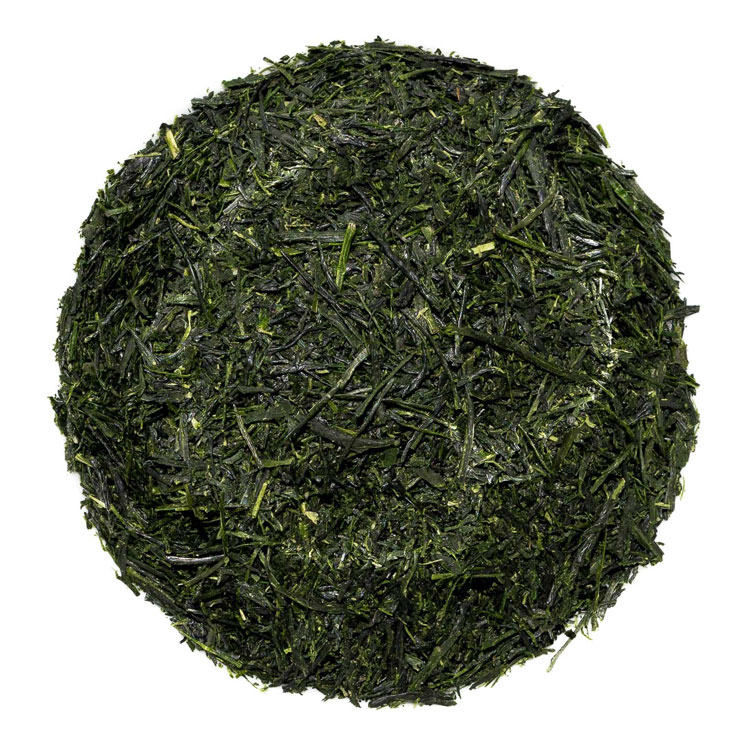
Kabusecha is Sencha tea after it has undergone a specific amount of shading before harvest, Kabusecha translates to “shaded tea”. For reference, regular Sencha leaves are unshaded and Gyokuro leaves go through about 20 days of shading, with Kabusecha receiving 10-14 days of shade.
Kabusecha is considered a low-quality Gyokuro.
Flavour: Refreshing with a potent “umaminess”. Kabusecha tea sits between Sencha and Gyokuro when it comes to flavour.
Appearance: Dark rich green and needle-like leaves. When infused, it produces a green-yellowy colour.
Trivia: The process of shading tea has multiple effects. The more shade, the stronger the umami flavour and the lower the astringency. This is because shading increases the concentration of the L-theanine amino acid in the tea leaf (the chemical component responsible for a green tea’s umami flavour).
RULE OF THUMB: The stronger the umami flavour, the higher the tea quality.
Where to buy? Curious Tea.
Mugicha
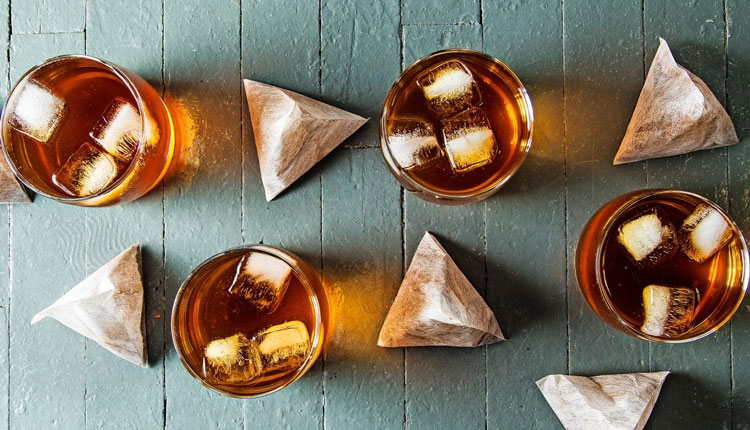
Japanese roasted barley tea.
One of the most popular summer refreshments. All over Japan, you’ll find bottled Mugicha sold at supermarkets, convenience stores, and vending machines.
Since the 1950s, Mugicha has become one of Japan’s most popular summer drinks especially since barley is harvested during the summer.
Flavour: A toasty-nutty taste, with a subtle bitter aftertaste.
Appearance: Brown, with cooling effects, hydrates the body, prevents tooth decay, and stimulates blood circulation.
Health Benefits: Mugicha takes on the properties of barley which is very high in fibre, full of vitamins, minerals, and antioxidants that cleanse your blood.
Trivia: During the Japanese civil war era aka the Sengoku period, military commanders would drink it not only as a typical tea but also mixed with alcohol.
Where to buy? Naturitas.
Sakuracha
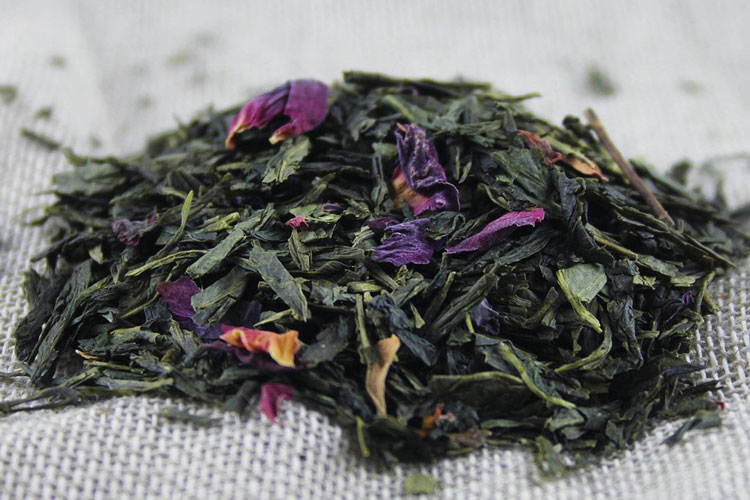
Made by soaking cherry blossom petals in boiled water. Sakura petals are pickled in plum vinegar and salt and left to dry prior to soaking. Petals are harvested March-April but the pickling process enables them to be enjoyed all year round.
Flavour: Mildly salty taste with undertones of plum, with earthy and flowery notes.
Appearance: Salted bright mauve Sakura petals with brown stems that create clear pink water when soaked.
Health Benefits: Known for its anti-aging properties due to its high concentration of polyphenol antioxidants.
Trivia: Every year, during Spring, the Sakura is enjoyed by all who experience the transient beauty of flowers. Starting in Okinawa and travelling north to Hokkaido.
Where to buy? Camden Tea Shop.
Kocha
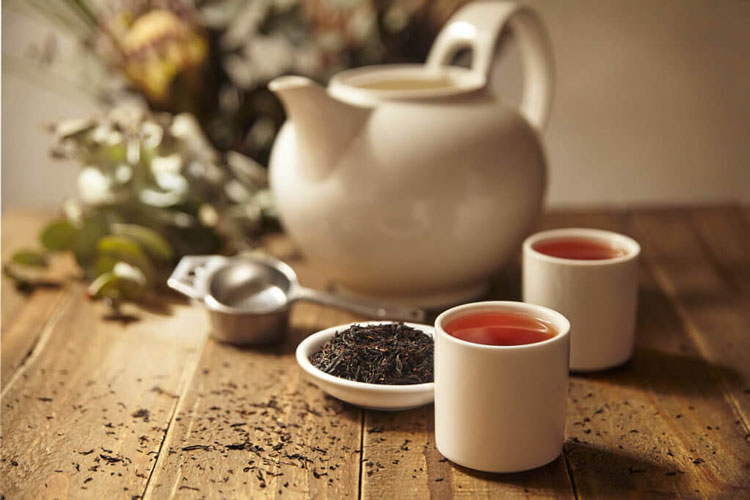
This is Japan’s Black Tea. Kocha leaves are left to fully oxidise before being dried, which owes to its comparatively stronger taste.
Flavour: Mellower and less bitter than other Black Tea equivalents in other parts of the world. This is thanks to Japan’s unique climate and soil, but also because of the unique tea cultivars used.
Appearance: Dark reddish-brown.
Health Benefits: Known to provide energy and immune system boosting effects. Restricts bacteria growth that leads to cavities and tooth decay.
Trivia: Rarely exported outside of Japan. Can retain its flavour for several years.
Where to buy? Sora Tea Co.
Tamaryokucha
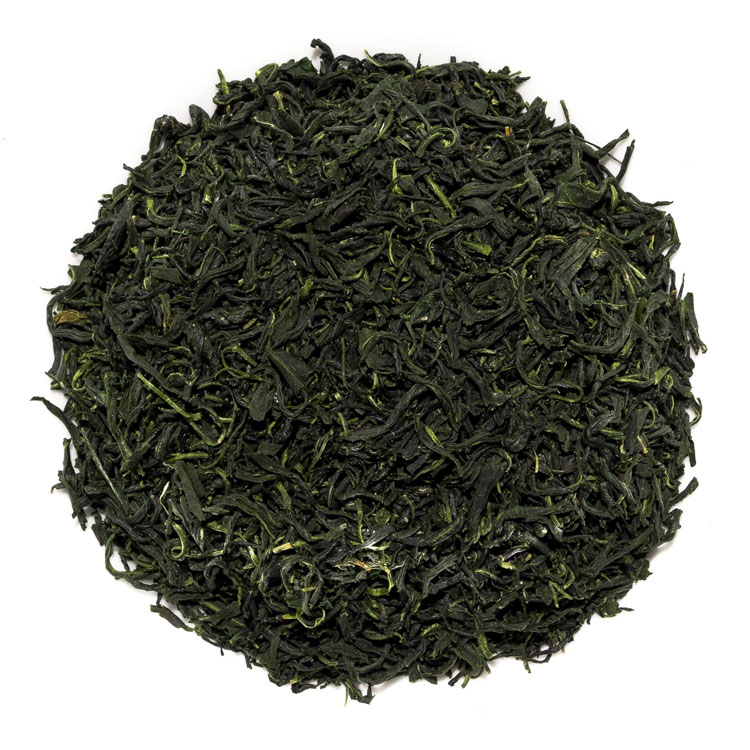
A type of Sencha tea that is produced in the Kyūshū area, especially in the prefectures of Saga, Nagasaki, and Kumamoto.
Tamaryokucha is harvested and processed in an exact manner as straight-leaf Sencha. But, at the end of the tea making process, Tamaryokucha tea leaves are rolled to make them curly.
Not surprisingly Tamaryokucha translates to “curly green tea”.
Flavour: If you want a tangy, berry-like taste, along with a bit of almond and grass this is the perfect match for you.
Appearance: Dark green coiled leaves that produce a golden yellow colour when infused.
Health Benefits: Like all Sencha tea, Tamaryokucha is rich in antioxidants and vitamins.
Trivia: Tamaryokucha is ideal if you prefer your tea to be nutty, with its almond aftertaste.
Where to buy? Curious Tea.
Kukicha
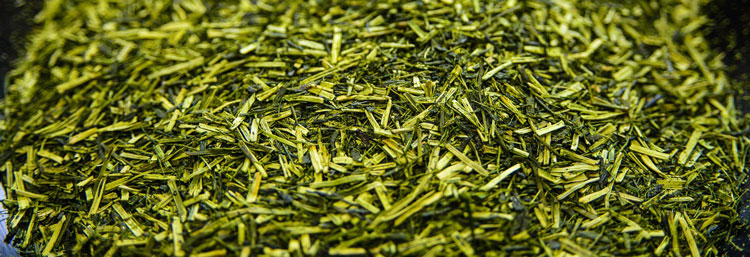
Also known as bōcha, Kukicha is a wonderful blend of twigs, stems and stalks that come from the production of Sencha or Matcha tea. Kukicha is composed of the parts of the tea plant that are normally removed.
Flavour: Sweet, creamy and slightly nutty.
Appearance: A mottled appearance of light green stems and dark green tea leaves. When infused the colour is a clean yellowy-green.
Health Benefits: Kukicha is perfect for those seeking a macrobiotic diet and is ideal for children since it contains far less caffeine than coffee and black tea.
Trivia: Kukicha is also known as 3 years tea because the stems and branches ingredients have been part of the tea plant for at least three years It’s really high in calcium (contains up to 13 times more calcium than a glass of milk)
Where to buy? Ikkyu Tea.
Mecha

A byproduct Japanese green tea that is made from the early leaf tea tips and buds from Gyokuro or Kabusecha, Mecha is harvested in Spring. An advantage of Mecha is that it can be re-steeped 2 or even 3 times throughout the day without losing its flavour. However, don’t overdo it because it will end up being too bitter to drink!
Mecha tea can be mainly found in the Uji, Yame and Shizuoka.
Flavour: Bitter and astringent aftertaste.
Appearance: Dark green lumps of tea buds. When infused, Mecha produces a clear, soft yellow drink.
Health Benefits: Aids digestion.
Trivia: Although much cheaper, it is quite comparable in quality to Gyokuo and high-grade Sencha.
Where to buy? Jugetsudo.
Tencha

Shaded Japanese green tea is used to make Matcha tea powder. Tencha is grown in the same manner as Gyokuro. Tencha leaves are dried but not kneaded though, as Tencha leaves are typically not intended to be infused but rather turned into tea powder.
The cultivation of Tencha leaves plays a huge role in the existence and production of Matcha.
Although not very common, you can also enjoy Tencha leaves steeped in water.
Flavour: Quite unique, pure, noble, elegant, deep, and mellow
Appearance: Vivid green colour, comes in small, dark green flakes.
Health Benefits: Rich in antioxidants – catechins. Although not as much as Matcha as you are steeping the leaf not consuming it entirely.
Trivia: Tencha leaves can also be used in cooking
Where to buy? Hibiki an.



































